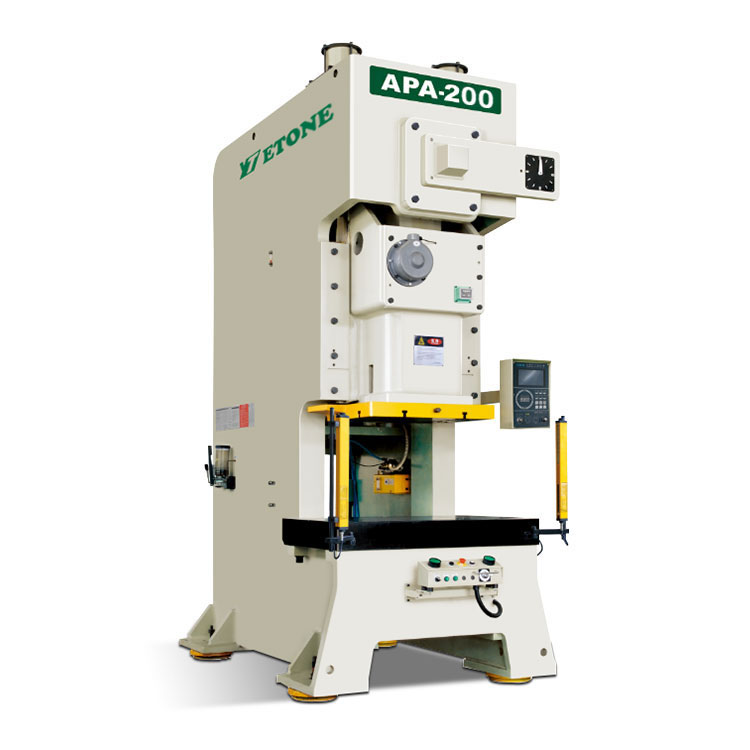High Precision Power Press vs. Standard Model: Key Features and Their Impact on Manufacturing Outcomes
2024-07-09
High Precision Power Press vs. Standard Model: Key Features and Their Impact on Manufacturing Outcomes
In the world of manufacturing, precision is paramount. Whether producing automotive components, electronics, or intricate metal parts, the accuracy and reliability of equipment can significantly impact both product quality and production efficiency. Among the critical machines in this sector are power presses, which are used to shape and cut materials into desired forms. While standard power presses suffice for many applications, high precision power presses offer distinct advantages. This blog will explore the key features that set high precision power presses apart from standard models and how these features contribute to improved manufacturing outcomes.
Key Features of High Precision Power Presses
1. Advanced Control Systems
High precision power presses are equipped with sophisticated control systems that allow for exact control over the press's operations. These systems often include programmable logic controllers (PLCs) and human-machine interfaces (HMIs) that enable precise adjustments and real-time monitoring of press parameters.
2. Enhanced Accuracy and Repeatability
The core advantage of high precision power presses is their superior accuracy and repeatability. These presses are designed to maintain tight tolerances, ensuring that each press stroke produces identical results. This consistency is critical in industries where even minor deviations can lead to significant issues in product assembly or performance.
3. Rigid Frame Construction
High precision power presses feature robust and rigid frame constructions. This rigidity minimizes deflection and vibration during operation, which can otherwise affect the accuracy of the press. The stable structure ensures that the press maintains its alignment and delivers consistent force across all operations.
4. Precision Ram Guidance System
The ram guidance system in high precision power presses is engineered to provide smooth and precise movement. This system reduces lateral movement and maintains the perpendicular alignment of the ram to the die, enhancing the overall accuracy of the press operations.
5. High-Quality Die Sets and Tooling
These presses often utilize high-quality die sets and tooling, designed to withstand the stresses of high-precision work. The precision of the dies and the robustness of the tooling contribute to the overall accuracy and longevity of the equipment.
6. Advanced Lubrication Systems
Effective lubrication is crucial for maintaining the precision and longevity of the press. High precision power presses are equipped with advanced lubrication systems that ensure all moving parts are adequately lubricated, reducing wear and tear and maintaining smooth operation.
7. Force Monitoring and Control
High precision power presses often include force monitoring and control systems that provide real-time feedback on the force being applied during each press stroke. This feature allows for immediate adjustments and ensures that the press operates within the desired force parameters, preventing overloading and ensuring consistent product quality.
How These Features Contribute to Improved Manufacturing Outcomes
1. Increased Product Quality
The enhanced accuracy and repeatability of high precision power presses result in higher product quality. Consistent and precise pressing operations ensure that each part meets the exact specifications, reducing the likelihood of defects and rework.
2. Enhanced Efficiency and Productivity
With advanced control systems and force monitoring, high precision power presses can be operated with greater efficiency. The ability to make precise adjustments quickly and monitor operations in real time reduces downtime and increases overall productivity.
3. Cost Savings
Although high precision power presses often come with a higher initial investment, the long-term cost savings can be significant. The reduction in defective parts, rework, and machine downtime leads to lower operational costs and improved profitability.
4. Better Material Utilization
Precision in pressing operations means less material waste. The consistent production of parts within tight tolerances ensures that materials are used efficiently, reducing scrap and contributing to more sustainable manufacturing practices.
5. Longer Tool and Machine Life
The advanced lubrication systems and robust construction of high precision power presses extend the lifespan of both the machine and the tooling. Reduced wear and tear mean less frequent maintenance and replacement, further contributing to cost savings and operational efficiency.
Conclusion
The key features of high precision power presses, such as advanced control systems, enhanced accuracy, rigid construction, precision guidance systems, high-quality tooling, advanced lubrication, and force monitoring, collectively contribute to significantly improved manufacturing outcomes. These presses not only enhance product quality and manufacturing efficiency but also offer long-term cost savings and better material utilization. For industries where precision is non-negotiable, investing in high precision power presses is a strategic decision that can yield substantial benefits.



